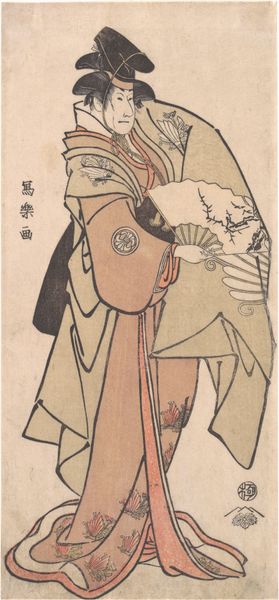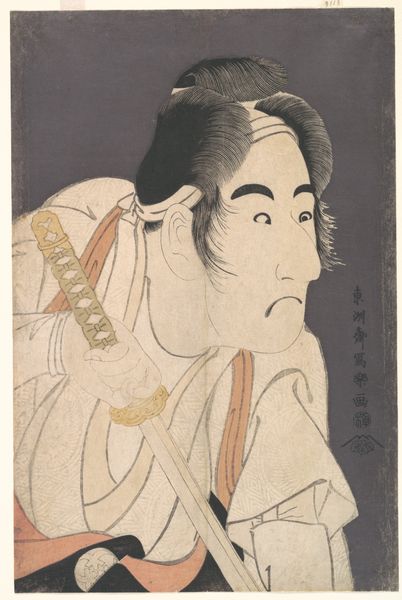
print, woodblock-print
#
portrait
# print
#
asian-art
#
ukiyo-e
#
figuration
#
woodblock-print
#
erotic-art
Dimensions: 22 1/2 x 4 1/2 in. (57.2 x 11.4 cm)
Copyright: Public Domain
This print by Eishōsai Chōki, made in Japan sometime between the 18th and 19th centuries, offers a glimpse into the social dynamics of its time. The artwork depicts a scene with a courtesan and her young attendant, or Kamuro. During the Edo period, the floating world of the Yoshiwara district was both a space of pleasure and a site of complex social hierarchies. Prints like these were a form of advertisement, showcasing the beauty and allure of courtesans, while also reinforcing social norms. The artist uses visual codes to convey meaning, from the elaborate hairstyles and clothing of the courtesan to the subservient pose of the attendant. We must research the history of the Yoshiwara district, the conventions of ukiyo-e prints, and the social status of women in Edo society to understand the full implications of this image. Historical inquiry can unpack the layers of meaning embedded within the artwork and reveal the complex interplay of power, desire, and representation in Japanese society.
Comments
No comments
Be the first to comment and join the conversation on the ultimate creative platform.













